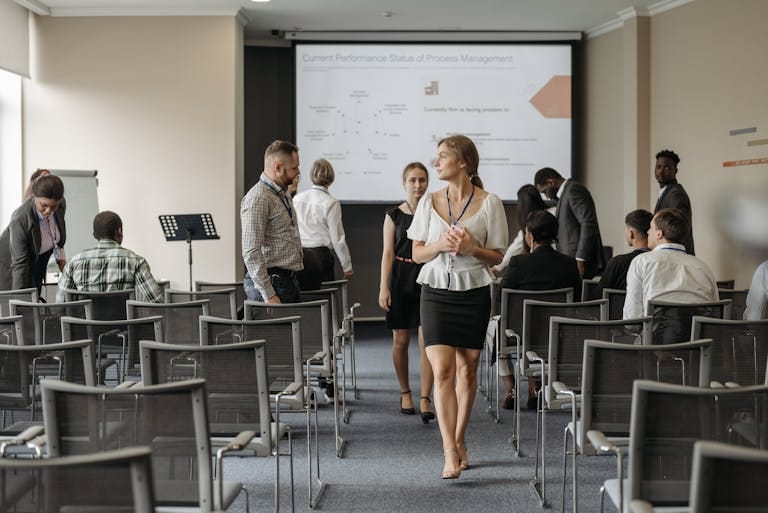AISEO for Niche Software Companies
A lot of SaaS or niche software companies are worried about losing their online visibility due to AI—and rightfully so. AI summaries are cutting people’s online search journeys short with their concise and convenient answers for all kinds of queries.
Matching with the right customers is already difficult–SaaS keywords can be obscure, the audiences are technical, and the buying journeys for these customers is long. So, finding the right balance between content that is too vague or shallow and content that’s too technical can be a challenge when trying to get it ranked in Google searches.
Research has shown that not only are Google users who encounter AI summaries less likely to click on links to other websites, but they are also more likely to end their browsing session entirely after visiting a search page with an AI summary.
…But this isn’t always the case. Sure, AI summaries are great for answering quick questions, but they can’t provide services, like creating software tailored to unique business challenges. And if you’re a SaaS company, the Google users who encounter AI summaries while searching for these kinds of services might actually have an easier time finding you—if you optimize your website with AI-citable technical content.
The LLMs chatting with your potential customers are going to have access to your content, reviews of your software, and anything else on the internet that mentions your company or software name, so it will definitely form an “opinion” of your product, whether you’re doing AI content optimization for your software or not. The key is to get ahead of the game and control the narrative by writing the content you want people to see.
SEO vs. AISEO–What’s the Difference?
You might be thinking “Great, I used SEO best practices in my blogs and landing pages!” But now, traditional SEO needs to be combined with AI Search Engine Optimization (AISEO), sometimes called AI Search Optimization (AISO). Both are still important, but AISEO adds a few new concepts to the mix. With new technologies come new marketing strategies, and the latest way to steer customers to your content (and services) involves adding AISEO to your content strategy.
So, what’s the difference?
Traditional SEO focused on simple keyword integration, backlinks, and on-page optimization, usually in longer form content. SEO works well with clear search queries and structured keyword strategies. All of this is still important for getting clicks and showing up in the first few search engine result pages (SERPS).
AISEO focuses more on natural language queries–like people asking questions to chatbots or voice assistants. AI tends to go a little deeper into the user’s search journey, by determining their intent through context (since people are now talking to technology like a person). So, AISEO works by incorporating content optimized for AI interpretation and inclusion in AI results. The goal is to have your content mentioned in the AI summaries or chatbot discussions–so, becoming a topic authority is important, along with writing for generative searches.
Why AISEO is Actually Good for Niche SaaS Visibility
It might be hard to get excited about the potential of adding AISEO to your vertical software content strategy when you already have a hundred other tasks to deal with. However, niche SaaS visibility is an asset for your company, and AISEO creates a path to that visibility for companies with technical products that were difficult to search for in the previous search landscape.
Before AI, business owners searching for solutions to efficiency problems or unique ways to accomplish business goals might have had trouble finding the right keywords to describe what they were looking for. The full complexity of their software needs can sometimes only be explained with a natural language description, and their intent may have been lost on a typical google search.
But now, AI assistants and chatbots can better understand their needs and steer them in the right direction. Good AISEO for SaaS helps the AI understand what kind of services you provide, who needs them, and ultimately, helps the customer find your services. This can now work even when business owners don’t know how to describe exactly what they need–describing their problem directs them to the software services that can help solve it.
There may not be a conventionally high search volume for your product, but when you have consistent and meaningful content about what you do, your website’s credibility can be seen as high by generative AI looking for content to provide to a user. When AI sees your credibility as high, you have a niche SaaS visibility and a much higher chance of being cited in AI summaries or chatbot discussions.
Let’s look at an example:
The owner of a trucking company is looking for solutions to a problem related to keeping track of inventory. Too many mistakes are being made, too much time is taken up, and money is being lost. They start asking a chatbot what to do to fix their issue.
Meanwhile, you offer inventory tracking software and you have an exceptional vertical software content strategy with lots of AI-citable technical content.
Even though the trucking company owner hadn’t thought about using software over manual data entry, an AI chatbot assesses their problem and suggests it as a solution. When the business owner asks for more information, the AI suggests your company and a match is made.
This might even extend to out-of-the-box software solutions vs. custom software solutions that business owners don’t even know are an option until they chat with an AI who assesses their issue.
Not only does the AI help direct customers to you, but it also helps filter out people who are unlikely to be a good match for your product.
How to Create AI-Citable Technical Content
Writing to catch the attention of generative AI involves following a fairly simple set of guidelines that can increase your niche SaaS visibility.
Use Natural-Language Headings and Subheadings
AI is analyzing user queries for intent, and sometimes the intent doesn’t fit into a simple keyword or a jargon-filled technical term. Think about the questions people are asking that you can answer or the problems that your software can solve and turn those into natural-sounding or conversational headings.
Incorporate Structure and Increase Scannability
Content should flow in a clear and logical way and be broken up into sections to avoid reader fatigue. Answers should be succinct, while still maintaining a human voice and authoritative information.
Scannability helps AI parse your information and also helps readers with short attention spans and little time get what they need quickly. Scannable content often includes:
- Bullet points
- Lists
- Summaries or TLDR sections
- Short paragraphs with direct answers to questions
- Frontloading information–answering the main question (if possible) right in the beginning
- Tables
- FAQs sections
Be an Authority in Your SaaS Niche
If the AI thinks you know what you’re talking about, it is more likely that your information will be cited, summarized, and surfaced by generative AI. So, how do you show that you’re an authority in your niche?
- Your website has a lot of content about the industry you’re targeting. Show that you truly understand the problems your customers have and how to solve them. Dive deep into the minute details of their business and do research–backed up by facts–about their industry and the challenges they encounter.
- Make sure to cite sources when making claims and that they are reliable sources, like marketing research groups, scientific research journals, trusted news sources, etc.
- Showcase expertise with case studies, testimonials, and quality backlinks.
Think Like a Customer
This is good advice no matter what industry you’re in. For SaaS, thinking like a customer means thinking about business problems your audience needs to solve, coming up with ways to solve them, and–when working with AI–making sure to ask and answer these questions in succinct and natural sounding language.
Think about how someone with a business problem (that can be solved with your software) will start their search and the ensuing AI assistant/chatbot conversation. Understanding their journey (and even testing it out with ChatGPT or another LLM) can help you come up with the best way to write for generative search.
Front-Loading Critical Information
Not everyone has the bandwidth to read through long-form content–and it turns out that AI prefers streamlined information too. This doesn’t mean that your content can’t include in-depth information about how your software works. There are certainly people that want to do deep dives into the content you’re providing.
To provide the best of both worlds, a good practice is to include a summary or a kind of TDLR section at the beginning of the content. This helps AI notice your piece and gives it some citable content that is more likely to show up in its own summaries–while also providing quick information for humans in a hurry. Then, the rest of the piece can go into more detail.
Optimize Your Vertical Software Content Strategy with WHI
Following the guidelines above can help you optimize your content strategy. It might take time and some fine-tuning, but the benefits are undeniable.
Even when you are able to think like a customer and provide fantastic software for solving real business problems, it can be time-consuming to figure out the new AI-dominated marketing landscape. Some companies just don’t have the time or marketing people to deal with it. If you want to really optimize your vertical software content strategy, but don’t have the resources, consider partnering with someone who can do it for you.
At Words Have Impact, we understand the software space and know what it takes to make companies stand out. Words Have Impact is your partner for content that people love, and that AI remembers. Contact us today to get started with an AISEO strategy that gets your product noticed.



